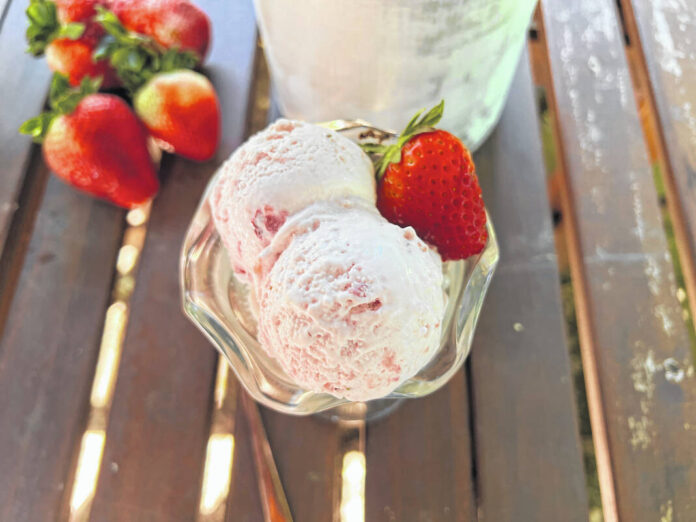FAIRFAX COUNTY, Va. — Ice cream has been a quintessential summer treat for generations, whether you prefer a twist of soft-serve chocolate and vanilla on a cake cone or two scoops of gourmet mint chip stacked on a hand-rolled waffle.
But back in the 18th century, the treat brought to America by the French was a rich man’s dessert.
You can’t make ice cream without three key ingredients — ice, salt and sugar — that most colonial families simply could not afford. Ice required a separate icehouse in which to store chunks of ice cut on a nearby river or creek in winter. Sugar and salt were expensive commodities imported from the Caribbean. Colonial home cooks would also have to own at least one cow whose milk the family didn’t need to sell to make cream and have the free time required to make the dessert.
Our nation’s first president — a wealthy man with a sizable enslaved community manning the house and gardens — was without those obstacles.
The large number of “ice pots” used for holding ice cream in Mount Vernon’s inventory records are a testament to George and Martha Washington’s love for the stuff. The estate also counted two tin ice cream molds, two “iceries compleat,” and a dozen “ice plates.” So dear was the dessert that Washington is said to have spent $200 in 1790 — nearly $5,000 in today’s dollars — to satisfy his insatiable craving for the cool and creamy treat.
The couple were also ahead of the curve, purchasing their first “cream machine for ice” in May 1784, six years before the first ice cream parlor opened in New York City.
Historians believe the Washingtons were introduced to the icy delicacy before the Revolutionary War by Norborne Berkeley, the colonial governor of Virginia, who served it to guests at his brick palace in Williamsburg. The couple apparently loved it so much that during his presidency, according to research historian Mary V. Thompson, Martha was famous for serving ice creams at her weekly receptions at their estate on the Potomac River.
Nearly all of the vegetables, fruits and berries served to the family and their many guests at Mount Vernon were grown in the estate’s expansive kitchen garden. And what a variety. As noted in “Dining with the Washingtons,” Washington planted “many types of apricots, at least two kinds of peaches, three types of plums, seven varieties of apples, eight varieties of cherries and 18 types of pears.”
He also loved fig trees and incorporated rows of strawberries and other berries into the center of the planting beds of his ornamental flower garden — a perfect sweet ingredient for making his beloved ice cream. You’ll still find the fruit in today’s garden if you visit during spring.
As strawberries come into season in and around Pittsburgh this month, use them to make Washington’s favorite dessert with this recipe that was adapted for the modern kitchen from a recipe for peach ice cream found in Mary Randolph’s 1824 housekeeping manual and cookbook “The Virginia Housewife: Or, Methodical Cook”. The fruit should be “perfectly ripe” and chopped “very small.”
MOUNT VERNON STRAWBERRY ICE CREAM
PG tested
3 pounds fresh strawberries, thinly sliced
1 1/4 cups sugar, divided, plus more as needed
3 cups heavy cream
3 cups half-and-half
Stir together the strawberries and 1/2 cup of the sugar. Set aside, stirring occasionally, to dissolve the sugar.
Scald the cream (bring just below the boiling point), remove from the heat and add the remaining 3/4 cup sugar, stirring to dissolve. Blend in the half-and-half.
Coarsely mash the strawberries, either by hand or in a food processor, and then combine with the cream and half-and-half, stirring well. Cover tightly with plastic wrap and refrigerate for at least 3 hours.
When ready to freeze, stir the mixture and add more sugar, if desired. Freeze in an ice-cream machine according to the manufacturer’s directions.
Makes about 2 quarts.
“Dining with the Washingtons: Historical Recipes, Entertaining and Hospitality from Mount Vernon” edited by Stephen A. McLeod (The University of North Carolina Press, $33.25)







